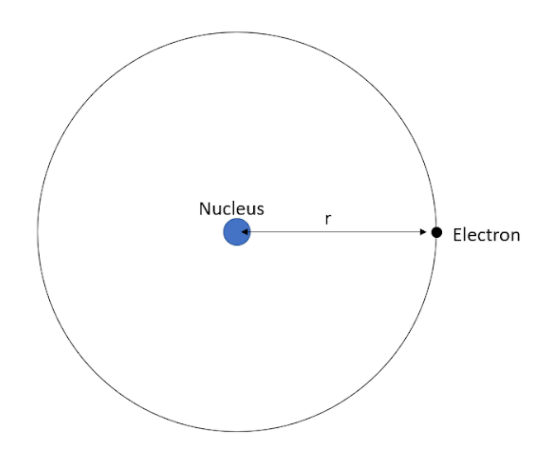
Calculate the radius of the
A.
B.
C.
D.
Answer
498.9k+ views
Hint: First we will use Bohr’s postulates to write an expression of angular momentum of the electron. Then we will balance the magnetic Lorentz force and the centripetal force on the electron and finally we will use both these equations to find the value of radius of the orbit.
Formula used:
Bohr’s postulate regarding acceptable angular momentum of electron for a stable orbit
Complete step by step answer:
According to Bohr’s postulates, for an orbit to be stable angular momentum of electron in it must be an integral multiple of

We will assume the electron moves in a magnetic field of magnitude B acting perpendicular to the plane of motion of the electron. The magnitude of Lorentz force on it will then be the product of its charge, the velocity with which it moves and the magnitude of the magnetic field. This magnetic force will be the force that provides the necessary centripetal acceleration for the motion of the electron in a circular orbit. So, we will get the balancing equation as
So, the correct answer is “Option A”.
Note: We can also find a totally different expression for the radius of the
Formula used:
Bohr’s postulate regarding acceptable angular momentum of electron for a stable orbit
Complete step by step answer:
According to Bohr’s postulates, for an orbit to be stable angular momentum of electron in it must be an integral multiple of

We will assume the electron moves in a magnetic field of magnitude B acting perpendicular to the plane of motion of the electron. The magnitude of Lorentz force on it will then be the product of its charge, the velocity with which it moves and the magnitude of the magnetic field. This magnetic force will be the force that provides the necessary centripetal acceleration for the motion of the electron in a circular orbit. So, we will get the balancing equation as
So, the correct answer is “Option A”.
Note: We can also find a totally different expression for the radius of the
Recently Updated Pages
Master Class 9 General Knowledge: Engaging Questions & Answers for Success

Master Class 9 English: Engaging Questions & Answers for Success

Master Class 9 Science: Engaging Questions & Answers for Success

Master Class 9 Social Science: Engaging Questions & Answers for Success

Master Class 9 Maths: Engaging Questions & Answers for Success

Class 9 Question and Answer - Your Ultimate Solutions Guide

Trending doubts
Give 10 examples of unisexual and bisexual flowers

Draw a labelled sketch of the human eye class 12 physics CBSE

Differentiate between homogeneous and heterogeneous class 12 chemistry CBSE

Differentiate between insitu conservation and exsitu class 12 biology CBSE

What are the major means of transport Explain each class 12 social science CBSE

Why is the cell called the structural and functional class 12 biology CBSE




